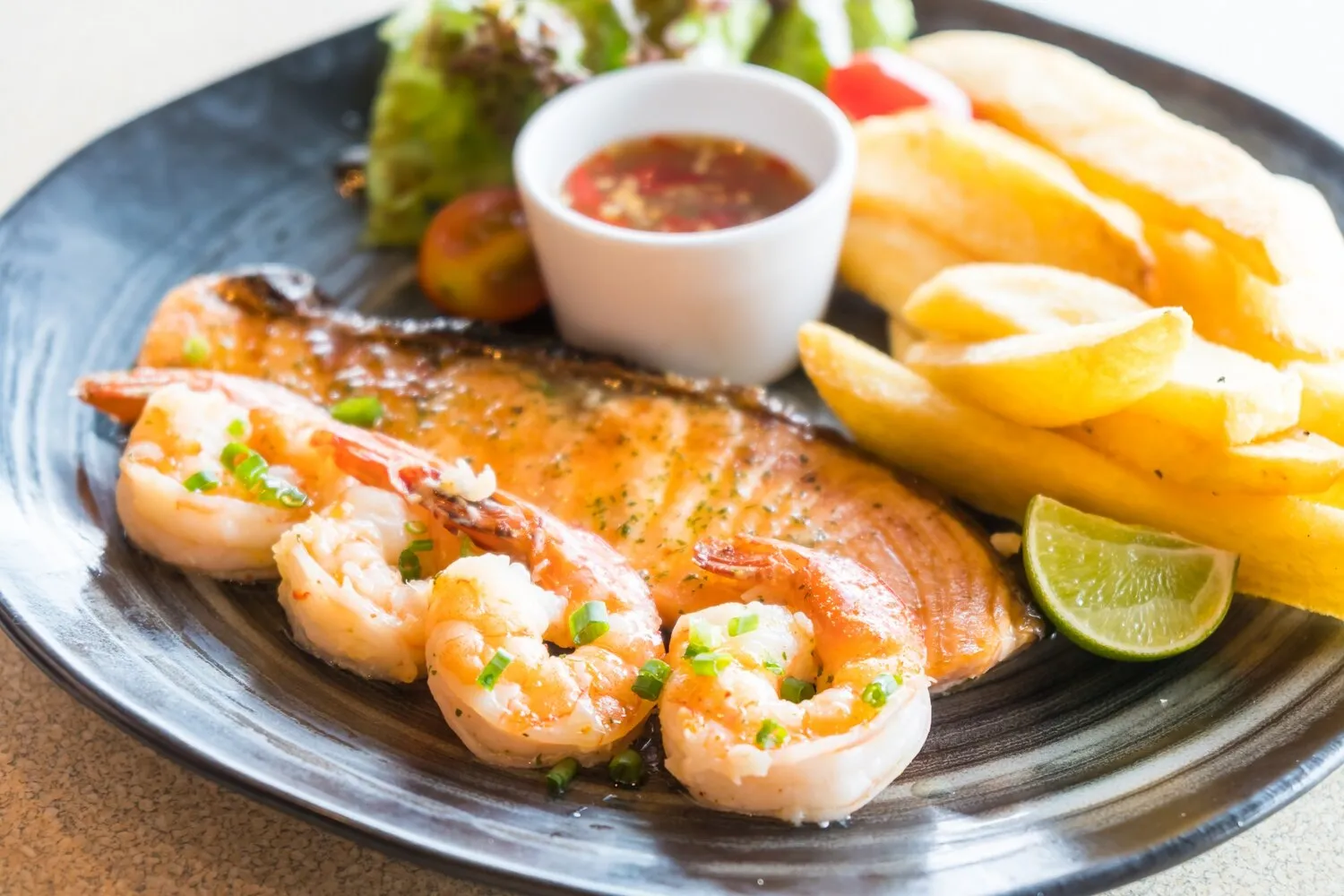
Lobster with Ginger and Scallions
Fresh lobster stir-fried with ginger and scallions, a classic Cantonese seafood preparation.
Nutrition Facts
* The % Daily Value (DV) tells you how much a nutrient in a serving of food contributes to a daily diet. 2,000 calories a day is used for general nutrition advice.
Kam Ding Seafood Restaurant
Cantonese cuisine, known for its emphasis on fresh ingredients and delicate flavors, likely influenced the development of Lobster with Ginger and Scallions. The use of ginger and scallions to enhance seafood flavors has a long history in Chinese cooking, dating back centuries. The dish probably evolved as access to fresh lobster increased in coastal regions, allowing chefs to experiment with new flavor combinations.
Lobster with Ginger and Scallions is often considered a celebratory dish in Chinese culture, frequently served at banquets, weddings, and special occasions.
Symbolism
Lobster, due to its red color after cooking, is often associated with good luck and prosperity in Chinese culture. Serving lobster dishes signifies a wish for abundance and happiness.
Banquet Staple
This dish is a popular choice for banquets because it is visually appealing, delicious, and relatively expensive, making it a symbol of generosity and celebration.
Family Gatherings
Sharing this dish with family strengthens bonds and fosters a sense of togetherness, highlighting the importance of family meals in Chinese culture.
The dish offers a savory and aromatic flavor profile with the sweetness of lobster complemented by the pungent warmth of ginger and the mild onion-like notes of scallions.
The primary flavor is the naturally sweet and rich taste of lobster meat. Ginger provides a pungent, slightly spicy warmth that cuts through the richness of the lobster and adds complexity. Scallions contribute a mild onion-like flavor and aroma, further enhancing the overall taste. A light sauce, often based on soy sauce, rice wine, and possibly a touch of sugar, provides a savory and slightly sweet foundation that ties all the elements together. The use of oil in stir-frying also contributes to the richness and mouthfeel of the dish.
Lobster Preparation
Ensure the lobster is fresh and properly cleaned. Consider par-cooking the lobster before stir-frying to prevent overcooking and maintain its tenderness.
Ginger and Scallion Technique
Finely mince the ginger and slice the scallions thinly to maximize their flavor release during stir-frying. Use both the white and green parts of the scallions for different flavor intensities.
Stir-frying Mastery
Use high heat and work quickly to ensure the lobster is cooked through without becoming rubbery. A well-seasoned wok is ideal for achieving the characteristic 'wok hei' flavor.
Sauce Balance
Adjust the sauce ingredients (soy sauce, rice wine, sugar) to your taste preferences. A touch of white pepper can add a subtle warmth.
Explore additional Cantonese dishes and restaurants
Explore CantoneseDiscover top dining spots and culinary experiences in Coquitlam.
Explore CoquitlamLearn more about the food culture, restaurant scene, and culinary heritage of Canada.
Explore Canada